Posted by Steve Durbin on September 11th, 2007

Succulus by Robert Pepperell
Robert Pepperell, the Head of Fine Art at Cardiff School of Art & Design, is interested in the phenomenon he calls visual indeterminacy: you see the scene before you clearly, but you don’t know what it is. His article Seeing without Objects: Visual Indeterminacy and Art has helped me put together another piece of the puzzle of what is compelling to me about abstraction and what I mean by abstraction in my own work. Pepperell comes at the question through art history, psychology/neuroscience, and his own drawings and paintings. For example, his painting Succulus is very evocative for me of the figures, draped clothing, and sky on the ceiling of the Sistine Chapel, yet I can’t actually recognize any of that in the picture. As described on his web page:
more… »
Posted by Steve Durbin on August 28th, 2007
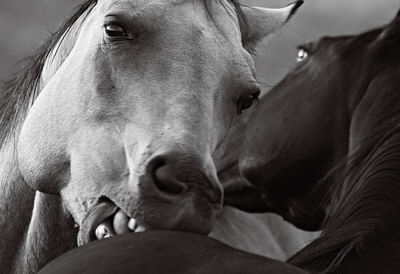
Now for something completely different from my usual inanimate landscapes. Probably almost every photographer in Montana has done horses at some point. They were actually a major subject of my first photos when I started up with digital photography, and starred in my first self-assigned project (not on the web site; I guess it’s still in progress). But they were eventually neglected as I mostly pursued my long-term interest in landscape and abstraction. Then I saw some postcards of the Horse Nudes portfolio of Kathe Lesage and realized what I’d been missing. Last weekend I had a chance to do something about it.
more… »
Posted by Steve Durbin on August 15th, 2007
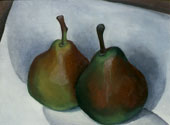

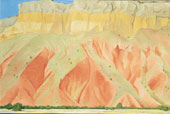
The abstraction is often the most definite form for the intangible thing in myself that I can clarify in paint.
Nothing is less real than realism…details are confusing…it is only by selection, by elimination, by emphasis that we get at the real meaning of things.
Posted by Steve Durbin on July 10th, 2007
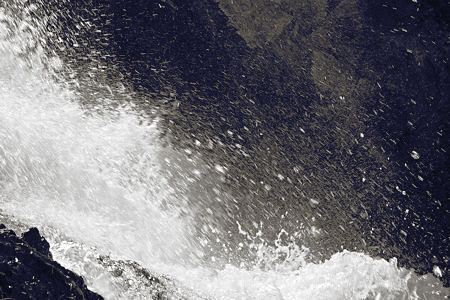
I could be accused of being stuck on my waterfall project lately, but my excuse is that it seems to connect to various other recent posts and comments. Anyway, it’s the work that I’m closest to at the moment, so it makes sense to write about it while it’s fresh. Fresh enough that the ideas are still churning around without order, which in truth is how I like it. I’m inclined by nature to let things ferment in their untidiness, not attempting to resolve or define, hoping/knowing that that will happen on its own eventually.
So this post is partly a record of the connection between concepts and execution, between thinking about the photographs and making them. In the present case, this is a pretty loose and interactive connection, perhaps similar to David’s “chickens, then eggs, then more chickens…” or Leslie’s “dialogue with the idea going back and forth with the making in a pretty comfortable way.” Karl also has been considering the role of concept in art, and I think his question, “Is art something we make, or discover?” is about the same thing. In other words, do we create from a concept or learn by doing? The answer, of course, is that both go on at once, but how it plays out is always different, even for me alone on this single project.
more… »
Posted by Steve Durbin on July 3rd, 2007
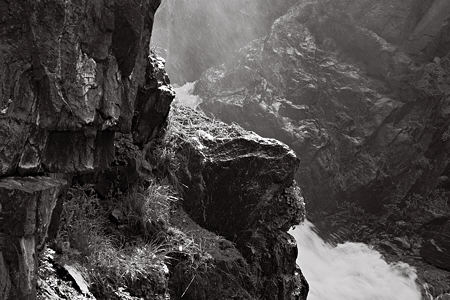
As regular readers may know, I’ve been intrigued by resemblances noted between some of my photographs, particularly the recent waterfall series, and those of Clyfford Still, the eccentric Abstract Expressionist determined to go his own way, living most of his life in relative isolation from the art world. Over the last year or so, I have sensed some movement toward abstraction in my work and I would like to explore that. What is abstraction for me? How does it relate to representation? What and how does it mean? I’m not aiming for a more sophisticated Statement, I’m just trying to better understand what I do and what others have done and what I can learn from it.
more… »
Posted by Arthur Whitman on June 26th, 2007
My taste in art—especially painting and drawing, but also other mediums—tends towards the strange, the mutant, the science fictionesque. This isn’t because I hate nature, but rather because I feel that art should offer something else, a surrogate (as Jackson Pollock once famously said to Hans Hoffman, “I am nature”). This kind of stuff probably isn’t to everybody’s taste, but what the hell.
I’ve been interested in Nava Lubelski’s paintings for something like three years. They seemed a bit lightweight when I first discovered them at Boston’s OHT Gallery. They’ve grown on me since then and I think the pieces themselves have gotten less uneven. Her method is unusual. She stains and splatters her canvases with thin washes of ink and acrylic paint in different colors. She then hand-stitches thread (again in various colors), tracing the outlines of the stains and creating new patterns as well. Some her recent canvases even have holes in them; A Lie About Birds and Bees is an impressive example. The results are reminiscent of abstract expressionism, as well as the post ab-ex tradition of color field painting. They also evoke birds-eye views of landscape or snorkeling—favorite themes of mine. At their best, the canvases are fascinating, intricate things.
In her artist’s statement, Lubelski describes her process in terms foreign to those of the stereotypically masculine world of abstract expressionism. She describes her staining as “spoiling” and her stitching as “mending”. The pieces are meant to suggest a duality of accident or wildness versus care and precision. I’m not a woman, but I do find this approach congenial.
Lubelski is also the author of a book: The Starving Artist’s Way. I haven’t read it, but it appears to be a sort of bohemian do-it-yourself guide. Her website also features several drawings and mixed-media sculptures (my favorite).
Posted by Leslie Holt on June 20th, 2007
The “tradition” of using non-traditional materials and found materials in art goes back awhile – from Braques and Picasso’s collages to Duchamp’s urinal. By now we are accustomed to seeing everyday things in the museums or galleries For me, the use of non traditional or found materials has to transform that material so that it becomes something else than the novelty of the material itself. A couple of artists came to mind when thinking about this today. I recently discovered and artist named Il Lee.
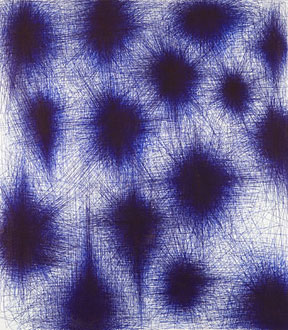
BL-069, 2006, Ballpoint pen on canvas, 48 x 42 inches more… »







